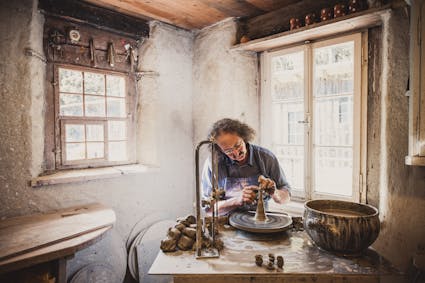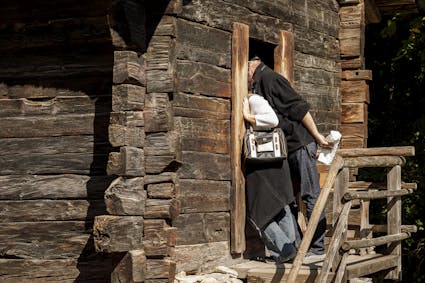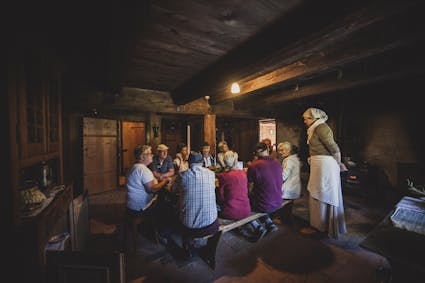Silk production
The production of the silk used by man is carried out by a little animal, the silkworm. Silkworms spin themselves into their precious filaments, forming a cocoon. These filaments are then unwound from the cocoon by dint of painstaking work and twisted to form the silk thread. The secrecy surrounding the production of this much sought-after silk fabric has played an important role in history. The Chinese held the monopoly of it for a long time. They were already exporting this luxury product along the Silk Road to Europe before the birth of Christ.
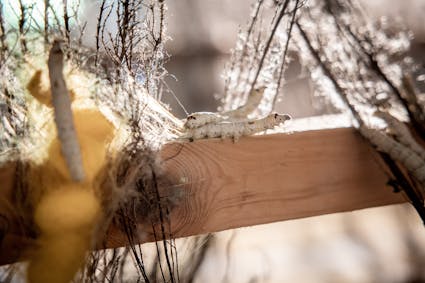
The production of silk also contributed to prosperity in Switzerland and created employment, initially as a cottage industry and later in the factory textile industry. Silk was especially important in Ticino, where silkworm breeding, respectively the production of cocoons, became a major sector of the economy in the 19th century and ensured the survival of large and poor families.

The Museum’s silkworms
In the Ballenberg Open-Air Museum their story is told in the Farmstead from Novazzano TI (851). The former owners of the farm did not miss the opportunity of profiting from the lucrative silk business. They planted hundreds of mulberry bushes, the leaves of which constitute the diet of the silkworms. Since 2005 the Museum restarted the production of silk and now shows the whole process, from the breeding of the worms to the finished silk fabric, on a weekend in summer.
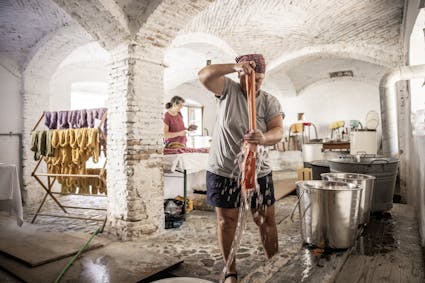
The precious filaments of the silkworms
To begin with it proved difficult to obtain the necessary know-how, as the production of silk in Switzerland had disappeared a hundred years earlier. Breeding silkworms is a delicate undertaking. When the larvae hatch they are a mere 1.5 millimetres in length, but within about 30 days they grow to a length of nine centimetres. They then spend about three days spinning themselves into a cocoon, accomplishing up to 250,000 rotations in that time. The finished cocoons are then dipped into hot water in order to facilitate the unwinding of the silk thread, which can reach up to three kilometres in length. Several threads are then twisted together to form the finished weaving yarn.
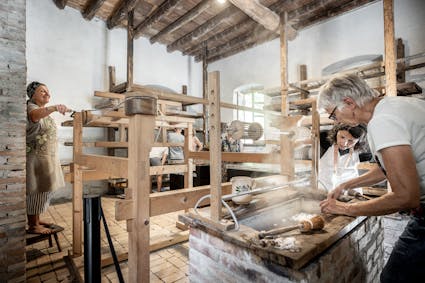
Ballenberg
Swiss Open-Air Museum
Museumsstrasse 100
CH-3858 Hofstetten bei Brienz
Company holidays
24 December 2025 to 11 January 2026
Opening hours Administration
3 November 2025 to 8 April 2026
From Monday to Friday
8.30 am to 11.30 am
1.30 pm to 4.30 pm
Opening hours
9 April to 1 November 2026
10 am to 5 pm daily

